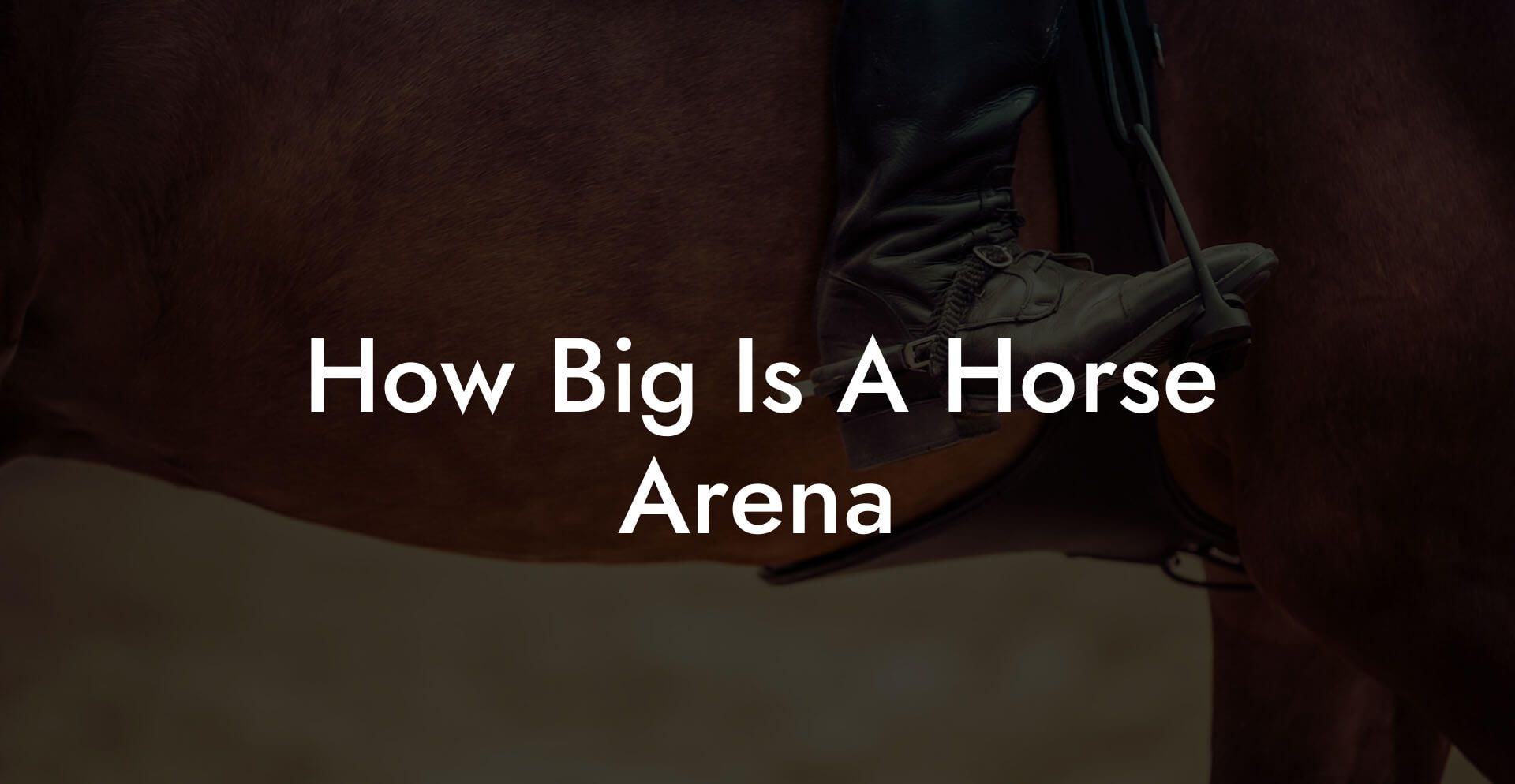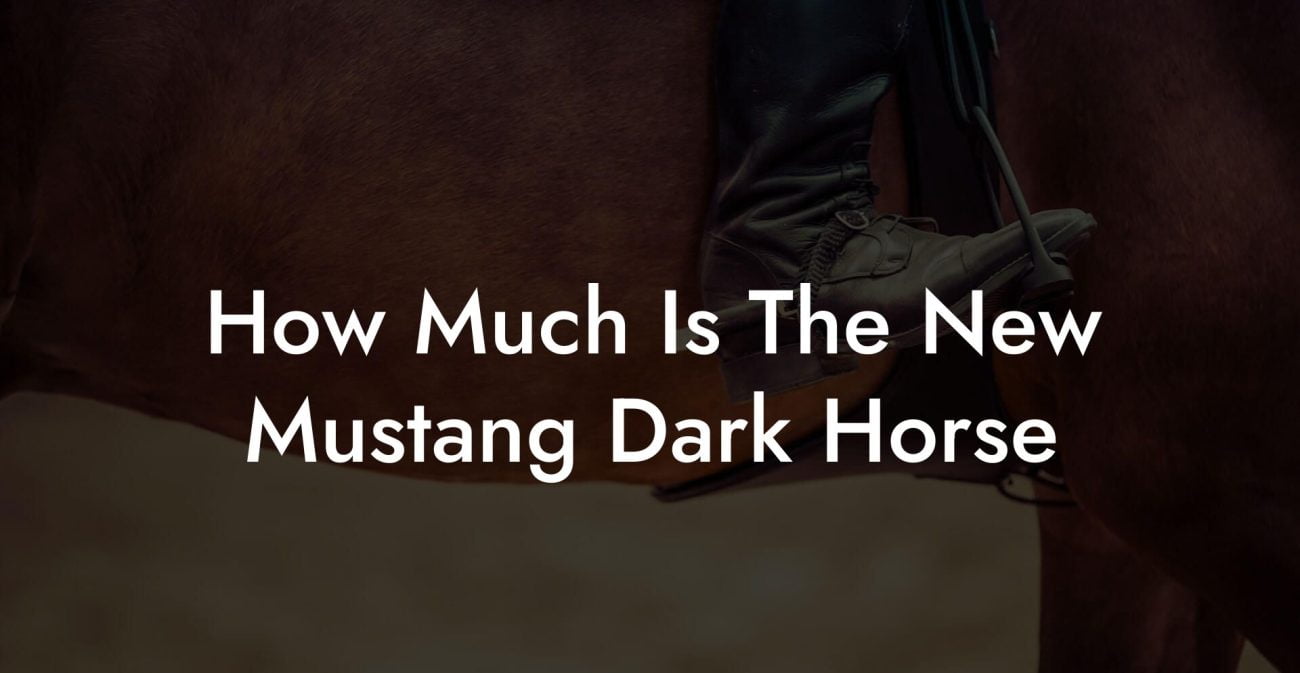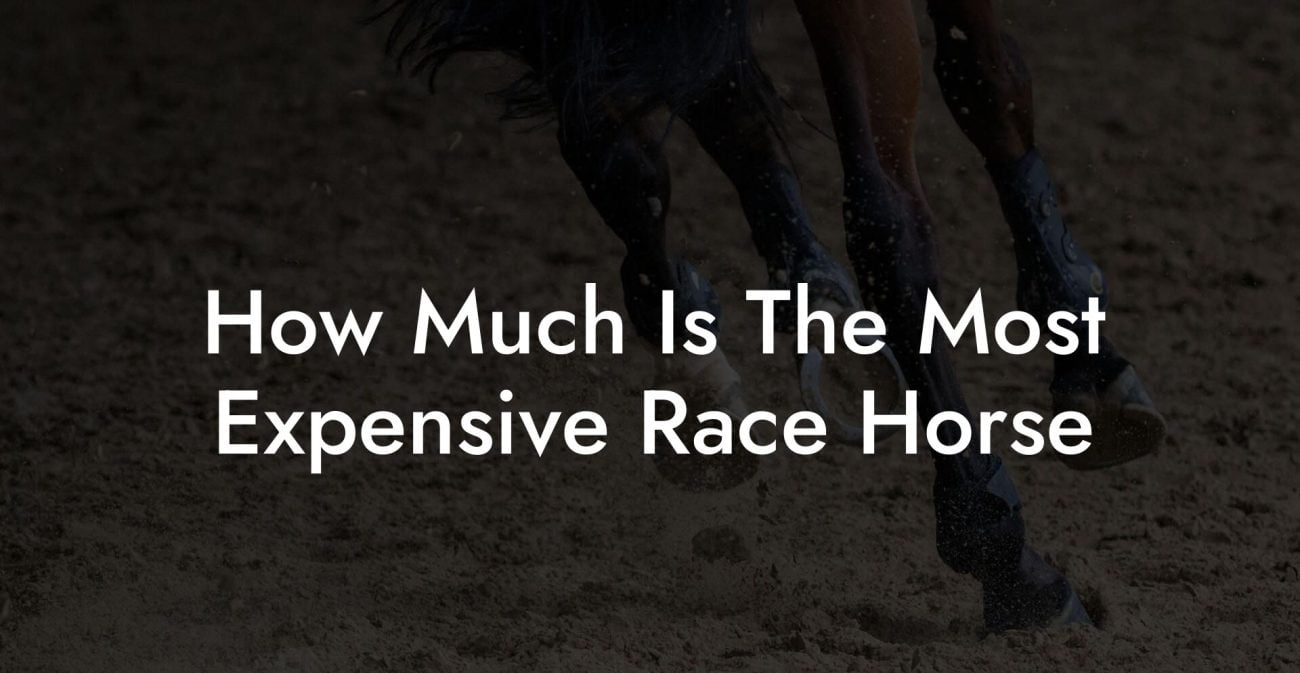Ever wondered if your horse’s personal runway is more runway-ready than your favorite festival field? Whether you're a first-time horse parent or a long-time equestrian enthusiast rocking Gen-Z vibes and millennial style, figuring out the perfect size for a horse arena is like curating the ultimate space for a festival, one that’s spacious enough for wild rides, smooth transitions, and those Instagram-worthy moments. Step into the world of horse arena dimensions, where practicality meets personality, and learn how to craft a playground that not only gives your equine friend room to gallop but also becomes a hub for community, creativity, and care.
Quick Links to Useful Sections
- The Evolution of Horse Arenas: From Ancient Pastures to Modern Marvels
- Understanding the Basics: What Exactly Is a Horse Arena?
- Decoding Dimensions: How Big Should a Horse Arena Be?
- Standard Dimensions for Various Uses
- Customizing Your Arena to Fit Unique Needs
- Key Design Elements: What Makes a Great Horse Arena?
- Surface and Footing
- Lighting and Shelter
- Safety and Accessibility
- Modern Aesthetics and Community Vibes
- Budgeting and Building: Bringing Your Arena Vision to Life
- Steps to a Successful Build
- Horse Arenas and Equine Care: Creating a Safe Environment for Your Best Friend
- How Arena Design Influences Horse Behavior
- Maintaining Your Arena for Optimal Equine Health
- Integrating Technology: Modern Tools for Monitoring and Improvement
- Smart Sensor Systems
- Mobile Apps and Digital Monitoring
- Resources and Community Support: Your Next Steps
- FAQs: All About Horse Arenas and Their Dimensions
- Your Arena, Your Vision: A Call to Action for Equestrian Innovators
The Evolution of Horse Arenas: From Ancient Pastures to Modern Marvels
Long before arena lights and modern fencing, horses roamed vast, open landscapes, roaming and grazing under endless skies. As human civilization evolved, so did our relationship with these magnificent creatures. Horse arenas have come a long way, from simple enclosures for roundups and jousts in medieval times to state-of-the-art facilities designed for competitive sports, training sessions, and community events. Today’s arenas blend aesthetics with function, mirroring the vibrant, adaptable lifestyles of Gen-Z and millennial horse enthusiasts.
Throughout history, the transformation of horse arenas reflects our growing understanding of equine behavior and needs. Ancient civilizations built enclosures that prioritized herd protection, whereas modern arenas focus on versatility and safety, adapting to a range of activities from dressage to barrel racing. With technological advancements and a better grasp of horse physiology, today’s arenas are thoughtfully designed havens that care for the horse’s wellbeing while also inviting riders, trainers, and fans into an immersive experience.
Embracing this evolution means recognizing that the design of a horse arena should celebrate both tradition and innovation, a space that pays homage to the past while forging a future of enhanced performance, safety, and connectivity.
Understanding the Basics: What Exactly Is a Horse Arena?
A horse arena is much more than a fenced space, it’s a meticulously designed environment where horses are trained, exercised, and showcased. Think of it as the epicenter of equestrian life where precision meets play. But what makes an arena? Typically, arenas are surfaces specifically tailored for riding, training, and competing. They come in various sizes, shapes, and materials, each chosen to best suit the type of activity they’re intended for.
Whether you’re eyeing an outdoor arena complete with natural footing or an indoor arena boasting climate control and cushioned surfaces, the core purpose remains the same: to provide a safe, efficient, and comfortable space for horses to perform at their best. And let’s be honest, a well-designed arena can seriously up your Instagram game while keeping your horse happy and sound.
In today’s diversified equestrian culture, the term “horse arena” encompasses everything from humble backyard enclosures to sprawling, competition-grade facilities, each with unique dimensions and specific design considerations.
Decoding Dimensions: How Big Should a Horse Arena Be?
When it comes to designing a horse arena, one of the first, and most important, questions is: “How big is a horse arena?” The ideal size depends on several factors, including the arena’s purpose, the type of activities it will host, and the breeds or sizes of the horses using it. Let’s break down the key considerations.
Standard Dimensions for Various Uses
For general riding and basic training, a common recommendation is an arena that’s at least 60 feet by 120 feet. This size allows ample room for most horses to move freely while providing space for riders to execute turns, transitions, and maneuvers without feeling cramped. However, for competitive events, more expansive arenas are ideal:
- Dressage Arenas: Often need a space of about 60 ft x 120 ft for standard tests, though some competitive venues stretch to 80 ft x 160 ft or larger.
- Show Jumping Arenas: To accommodate jumps and course layouts, these arenas can range up to 100 ft x 200 ft, ensuring there’s plenty of runway for both horses and riders.
- Eventing Arenas: Given the multi-disciplinary nature of eventing (including cross-country elements), the arena dimensions may vary even more, with some venues offering multiple areas catering to different phases of the competition.
These dimensions form the baseline recommendations, but modern designs often incorporate additional elements like turnout areas, warm-up zones, and spectator spaces, adding to the overall footprint of the facility.
Customizing Your Arena to Fit Unique Needs
The beauty of planning a horse arena is that it can be fully customized to meet your specific requirements. If you’re designing a bespoke facility for a private ranch or a community center, consider factors such as:
- Number of Horses: Larger facilities are necessary if you plan to host multiple horses at a time, whether for training or group exercises. A larger arena minimizes the risk of accidents and gives each horse the space they need for comfortable movement.
- Type of Events: Are you hosting high-paced barrel racing competitions, intricate dressage routines, or casual riding lessons? Specific disciplines require tailored dimensions and surface conditions, so it’s important to factor in those nuances.
- Environmental Factors: Local weather patterns, soil type, drainage, and even sun exposure play a significant role in choosing the right size and material for your arena’s footing. Some arenas incorporate adjustable features like retractable covers or modular sections, offering versatility with the changing seasons.
Designing an arena is a balancing act, combining the ideal dimensions with the practicalities of space available, budget constraints, and the long-term vision for your equestrian activities.
Key Design Elements: What Makes a Great Horse Arena?
Beyond just the square footage, several key design factors come into play when determining the effectiveness and appeal of a horse arena. Here’s what to keep in mind:
Surface and Footing
The arena’s surface isn’t just about aesthetics, it’s a critical element of horse care and performance. Good footing helps prevent injuries and enhances the rider’s ability to execute movements smoothly. Options range from natural dirt and grass to synthetic materials like rubber mats and specialized footing mixes. The chosen material should provide good traction, proper drainage, and low dust levels.
Many modern arenas incorporate mixtures of sand, fiber, and wax to create a surface that is resilient and gentle on the joints. Remember, a well-maintained footing is the foundation of any effective arena, directly impacting both safety and performance.
Lighting and Shelter
For indoor arenas, lighting is essential, not only for visibility during training sessions but also for creating an ambiance that resonates with modern, vibrant equestrian communities. Energy-efficient LED systems, skylights, and strategically placed windows can transform an arena into a bright, welcoming space.
Outdoor arenas, conversely, benefit from thoughtfully designed shelters and windbreaks. These features protect horses from extreme weather, ensuring that training isn’t derailed by sudden downpours or intense sunlight. A well-designed shelter also signals to visitors that your facility is both professional and caring.
Safety and Accessibility
Safety is paramount when horses and humans share the same space. A top-notch arena incorporates safety features such as:
- Secure Fencing: Modern fencing materials are designed to withstand spirited horses while preventing injuries. Mesh panels, vinyl coatings, and shock-absorbing structures ensure that even the most energetic horses remain safe.
- Rounded Corners: Incorporating rounded rather than sharp corners helps prevent accidental collisions and injuries, ensuring a smoother ride experience.
- Clear Sightlines: Open designs that limit visual obstructions reduce distractions for both horses and riders. This promotes better communication and safer navigation, especially during competitive events.
With safety enhancements integrated into every design element, your arena can become a trusted space where every ride is as secure as it is thrilling.
Modern Aesthetics and Community Vibes
Today’s equestrian arenas are as much about style as they are about functionality. Gen-Z and millennial enthusiasts appreciate spaces that combine modern design with a nod to tradition. Bold colors, eco-friendly materials, and adaptive elements unite to form an arena that isn’t just useful, it’s Instagrammable.
Incorporate comfortable spectator areas, lounging zones, and even on-site coffee spots to turn your arena into a community hub. A well-designed arena tells a story of passion and innovation, making every visit a memorable experience.
Budgeting and Building: Bringing Your Arena Vision to Life
Just like planning the ultimate music festival or curating a dream home, designing a horse arena requires both creativity and practical budgeting. Understanding your ideal arena’s size and features is just the beginning, next comes figuring out the costs and planning the construction.
Budgets for horse arenas can vary widely depending on the size, materials, and added features. For a basic outdoor arena, costs might be relatively modest if you already have some land and are using natural materials. However, upgrading to an indoor arena with climate control, professional-grade footing, and advanced lighting can drive the price upward. The key is to balance your vision with realistic financial planning.
Steps to a Successful Build
1. Initial Consultation and Landscape Assessment: Start by consulting with equestrian design specialists who can evaluate your site, discuss your needs, and provide detailed estimates aligned with your dream.
2. Customized Design: Work with architects and equestrian experts to draft a design that meets safety, performance, and aesthetic standards. Pay attention to key details, the quality of the footing, the durability of fencing, and the integration of modern amenities.
3. Secure Permits and Schedule Construction: Navigating local regulations and obtaining necessary permits is a crucial step before any construction begins. Once all the paperwork is in order, work closely with contractors to create a project timeline that minimizes disruption.
4. Quality Control and Finishing Touches: As construction nears completion, invest in final quality checks to ensure the arena meets all safety and performance criteria. Add creative design elements, paint murals, install ambient lighting, and create comfortable waiting areas, to make your finished arena a destination rather than just a functional space.
By following these steps and keeping your goals clear, you can transform a simple plot of land into a world-class arena that respects tradition while embracing modern design.
Horse Arenas and Equine Care: Creating a Safe Environment for Your Best Friend
Ultimately, no matter how impressive the dimensions or cutting-edge the design, the primary function of a horse arena is to ensure the safety and well-being of its equine users. Caring for your horse extends beyond the stables, it begins in the arena. Every inch of space and every design detail should consider your horse's comfort and health.
How Arena Design Influences Horse Behavior
Horses are sensitive creatures with acute spatial awareness. A well-designed arena not only minimizes obstacles and distractions but also enhances a horse’s confidence. Clear sightlines, smooth footing, and well-placed boundaries help your horse feel secure and reduce anxiety during training sessions. This reassurance elevates performance, allowing your horse to focus on the routines you both love.
Moreover, thoughtful arena planning takes into account the natural behaviors of horses. For instance, ample space for warm-ups and cool-downs aids in preventing injuries, while shaded areas and proper drainage keep your horse safe and comfortable in changing weather conditions.
Maintaining Your Arena for Optimal Equine Health
Beyond its design, the day-to-day upkeep of your arena is critical. Regular maintenance, such as checking footing levels, repairing fencing, and ensuring proper drainage, helps prevent injuries and keeps the space inviting. Routine cleaning and inspection are just as important for your horse’s health as regular veterinary check-ups.
Creating a maintenance schedule can be a game-changer. Consider weekly inspections for surface wear and seasonal overhauls to refresh the arena’s design elements. By combining proactive care with innovation, you create a long-lasting, safe haven that your horse will thrive in.
Integrating Technology: Modern Tools for Monitoring and Improvement
In a world where technology enhances every aspect of our lives, equestrian facilities are no exception. Innovative tools and systems can further elevate the design and functionality of your horse arena. From apps that monitor maintenance schedules to sensors that track footing conditions, technology is seamlessly integrating into modern equestrian care.
Smart Sensor Systems
Imagine receiving real-time notifications about the moisture level and surface hardness of your arena. Smart sensors can measure environmental factors such as temperature, humidity, and even detect wear on the footing. Armed with this data, you can make quick decisions on when to water the surface, adjust lighting, or schedule maintenance, ensuring your horse is always riding on safe ground.
Mobile Apps and Digital Monitoring
Equine technology is also bridging the gap between grooming professionals, trainers, and owners. Mobile apps designed for equestrian management help track exercise routines, performance metrics, and even maintenance logs for your arena. These digital tools make it easier to coordinate visits, monitor progress, and share updates with a supportive community of riders and horse lovers.
For those who love data, smart arenas are transforming the way we approach equine care. By blending technology with traditional methods, you create an environment that prioritizes safety, efficiency, and the overall well-being of your horse.
Resources and Community Support: Your Next Steps
Turning your horse arena dream into reality is a journey best traveled with a community. Whether you're seeking expert advice, looking for design inspiration, or simply connecting with like-minded horse enthusiasts, numerous resources are at your fingertips.
Start locally by visiting equestrian centers, riding clubs, and specialized trade shows. Engage with online forums, social media groups, and blogs where you can share insights about arena sizing, design trends, and routine maintenance tips. Many modern equestrians turn to online platforms not just for advice but also to scout innovative ideas that combine aesthetics, technology, and safety.
Additionally, consider partnering with professionals who have experience in building and maintaining equine facilities. From architects with a passion for horse arenas to suppliers offering bespoke footing solutions, collaborating with experts can streamline the process and ensure your facility becomes a trusted haven for horse care.
Empower your journey by tapping into community support, because when like-minded individuals come together, every jump, every turn, and every stride in the arena becomes a shared adventure filled with creativity, passion, and unbeatable style.
FAQs: All About Horse Arenas and Their Dimensions
To wrap up, here are some frequently asked questions that address common concerns about horse arena sizes, design tips, and equine care strategies:
1. How big should a typical horse arena be?
The size of a horse arena largely depends on its intended use. For basic training and riding, an arena around 60 feet by 120 feet is common. Competitive disciplines like dressage or show jumping might require larger spaces, sometimes up to 100 feet by 200 feet or more.
2. Can I customize the dimensions of my arena?
Absolutely! Customizing your arena is often recommended to address the unique needs of your horses and activities. Factors such as the number of horses, types of events, and environmental conditions all influence the ideal dimensions.
3. What surface materials are best for horse arenas?
Footing is critical for safety and performance. Options include natural soil with proper drainage, sand-fiber mixes, and synthetic surfaces. Each has benefits and should be chosen based on comfort, maintenance needs, and the climate in your region.
4. How does lighting impact indoor arenas?
Proper lighting ensures visibility and enhances safety. Energy-efficient LED systems, natural skylights, and strategic window placements create a bright, modern environment that benefits both horses and riders.
5. What are the best ways to maintain my arena?
Regular maintenance is key. Routine inspections, keeping the footing at optimal moisture levels, fixing any wear-and-tear on fencing, and using smart sensor technology can all contribute to a safe, long-lasting arena.
6. How can technology improve arena management?
Today, smart sensor systems and mobile apps help track environmental conditions, maintenance needs, and usage patterns, enabling proactive care and a consistently safe riding experience.
7. Should I consult professionals when designing a horse arena?
Working with equestrian architects and experienced contractors can help ensure that your arena meets safety standards, stays within budget, and adheres to the specific needs of your riding activities.
8. What innovations are on the horizon for horse arenas?
Advancements include improved synthetic footings that better mimic natural surfaces, more efficient environmental controls for indoor arenas, and integrated technology that provides real-time data on arena conditions.
These FAQs aim to guide you through the process of designing and maintaining the ideal space for your horse. Every detail, from dimensions to lighting, contributes to a cohesive setting where safety and style go hand in hand.
Your Arena, Your Vision: A Call to Action for Equestrian Innovators
Designing a horse arena is more than just measuring space, it's about forging a sanctuary that nurtures both the spirit of the equine and the soul of its caretaker. With the perfect blend of size, safety, style, and smart technology, your arena becomes a dynamic extension of your passion for horses.
Embody the ethos of forward-thinking care by envisioning an arena that not only meets standard requirements but also sets new benchmarks in equestrian excellence. Whether you’re planning intimate training sessions or organizing community competitions, let your arena represent your commitment to care, innovation, and the well-being of your best four-legged friend.
Now is the time to take action. Reach out to experts, explore cutting-edge materials and technologies, and join the wave of equestrian innovators who are revolutionizing how we care for horses. Embrace a collaborative spirit where tradition meets modernity, and each detail, be it meter or millimeter, contributes to a legacy of excellence.
Your journey to creating the ultimate horse arena is lined with opportunities to experiment, improve, and inspire. Share your ideas, learn from your community, and above all, ensure that every stride your horse takes is a testament to the groundbreaking space you've built together.













